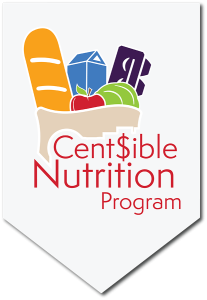Back-to-school can be a stressful time. Relaxed summer schedules give way to more harried school schedules, which might mean there is less time for cooking and meals. Read on for tips that can help your family continue to eat healthy as you shift back into school schedules, while keeping your budget on track.
- Make a list of everything you need and shop ahead of time. Planning meals for the week means you do not have to rely on more expensive convenience food or eating out. This also allows you to keep an eye out for special deals, use coupons, and save trips to the grocery store. Planning to double a recipe and freeze half for another meal can also help you save time and stress at mealtime.
- Find staple after school go-to snacks. Fruits and vegetables are simple solutions for after-school snacks. Keep whole, fresh fruits, like apples and bananas, easily available on the table or countertop. Fruit and vegetables, like melon, carrots, and celery can be cut and portioned ahead of time and kept in the refrigerator. Portioning them into single serving sizes makes for simple solutions to after-school snacks. Canned fruit in light syrup, 100% juice, or frozen fruit are also great longer lasting options. Remember to keep cut, canned, and frozen fruit cold in lunch boxes.
- Look for other ways to save on food expenses. Consider enrolling your child in school breakfast and lunch. The National School Lunch Program must meet federal requirements for nutrition that include standards for milk, fruits, vegetables, and whole grains, so you know your children are receiving a healthy meal. Participating in free or reduced-cost meals means less worry about preparing or paying for breakfast and/or lunch, and it means there is more money left in the home food budget. Check with your children’s school to learn how to enroll.

